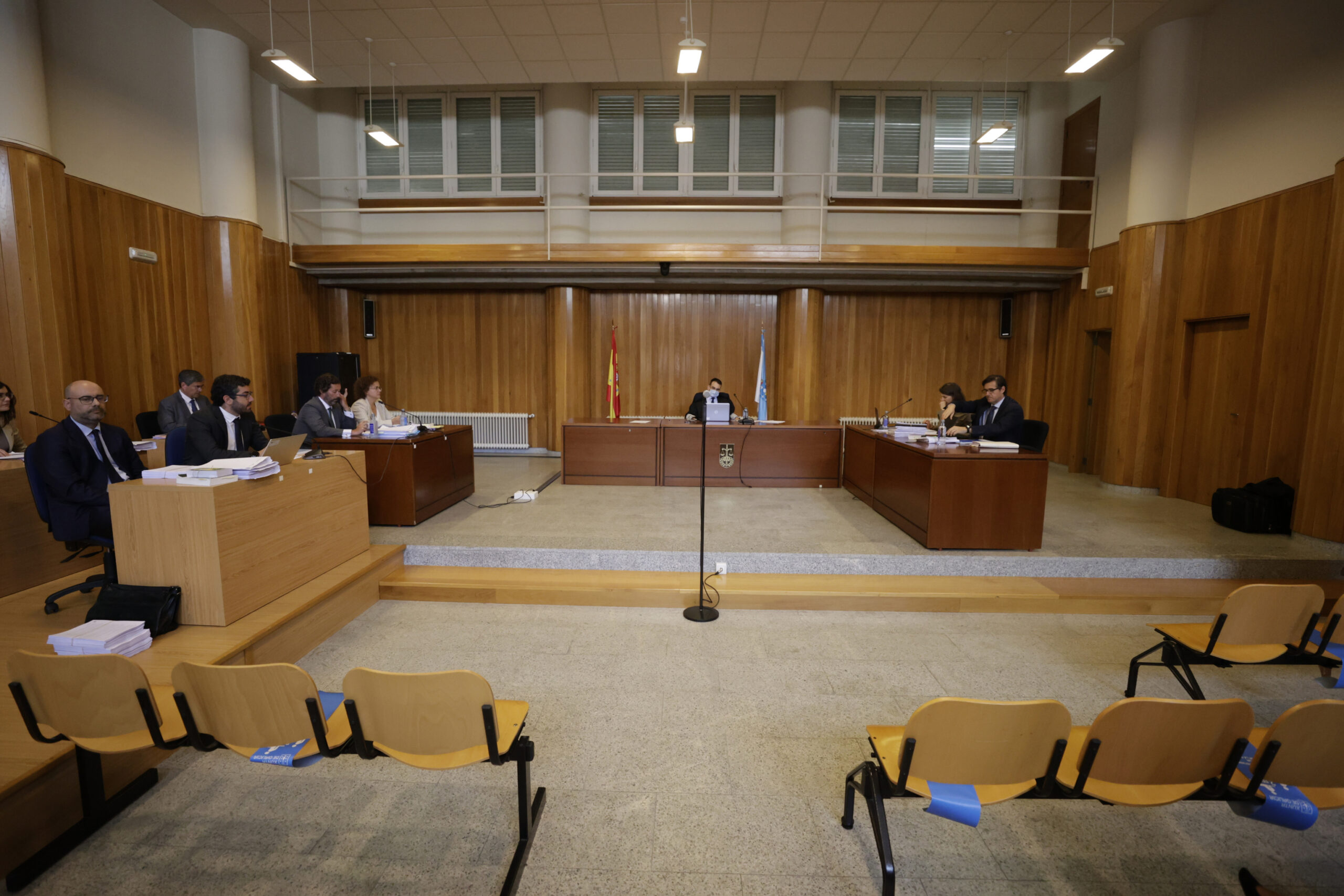New episode in the legal battle waged by the Franco family and the State over the Pazo de Meirás, former summer residence of the dictator in the Coruña town of Sada. The court already decreed in 2020 the public ownership of the property, but now it is under discussion whether the assets inside belong to the heirs or the State. This Thursday the hearing began in the A Coruña courts to determine it with conflicting views between the parties. While the State claims 133, the family disputes ownership of 50.
The hearing began with surprise and transfer by the Franco. The family’s lawyer recalled that the assets have been seized for 14 months and announced that they are renouncing five that “are inseparable” from the Pazo, while another 50 claimed by the State and the rest of the administrations in person – the Xunta de Galicia, the A Coruña Provincial Council and the municipalities of A Coruña and Sada- considered that they are the property of Franco’s heirs and can take them.
At the beginning of this hearing, which comes after three postponements and eight months after the first summons, the lawyer pointed out that the family renounces claiming a coat of arms of the Duchy of Franco, a stone monolith with an external inscription, two external Franco coats of arms and a painted Cordovan located inside the chapel attached to the Pazo.
After this initial cession, the visions remain unresolved and it must be the titular judge of the Court of First Instance number 1 of A Coruña who determines if they should remain in the property, now public and for a year open to visits, or they can pass at the hands of the Franco, who already in 2020 had contracted the move to remove their possessions, but could not do so by court order. The court that determined that the Pazo is public is the same that now decides on the assets, although its owner has changed.
The hearing has an eminently technical nature and revolves around various expert reports that inventoried the assets and determined their origin and ownership. The authors of the documents are passing through the hearing room and several experts have insisted that many of these assets are indivisible with respect to the pazo.
Thus, for example, the historian Manuel Pérez Lorenzo, co-author of the book Meirás: un pazo, un caudillo, un espolio, which was key in the trial that returned the Pazo to the State, concluded that all those assets in dispute “are designed in a spirit of of permanence” and “have no value by themselves, but in relation to the set of pieces and in relation to the environment in which they are”.
In his statement as a witness – he could not do so as an expert because a report of his authorship presented by the Sada City Council was out of time -, he concluded that removing these assets would mean “a decrease in the historical and cultural value of the complex.”
This historian also insisted that “many elements, more than could be imagined, date back to before 1938”, the date on which Franco made the Pazo his official summer residence, and they were already on the property when It belonged to the writer Emilia Pardo Bazán. This specialist also pointed out that he missed Franco’s desk in the inventory of goods.
The experts were detailing the assets in dispute one by one and the architects of the Heritage Service of the Xunta de Galicia Manuel Chaín Pérez and Juan Antonio Naveira concluded that if they remove the elements claimed by the Franco family, “it will not be the chapel of the historic site of the Pazo de Meirás”, but part of its essence will be lost.
This chapel, according to these technicians, experienced a “clear leap in greater representativeness since Franco entered Meirás” and, when it became the dictator’s official summer residence, this construction “is not a private space for a family, it is a church “. Despite the fact that the Franco’s lawyer does see it feasible to search for other pieces similar to those in dispute, the experts disagree and consider that elements such as some in stone that are even anchored to the structure cannot be removed.
The experts provided by the State and the Xunta show a concurring theory that the assets in dispute form a “set” and some are the legacy of “a unitary project” with which Emilia Pardo Bazán understood this manor and had it built before his heirs sold it and it ended up in the hands of the Franco family.
They consider that these goods give “character” to the space and “are necessary to understand it” as a whole now that it has become a public space and open visits to the public are being made, and that removing them would mean breaking “the very historical sense” of the property and could even pose a “risk” for some pieces such as stone benches and tables, statues or baptismal fonts such as those under discussion in the chapel.
The specialists insist that the goods “are typical of the historic site” and fulfill their functions in the Pazo. Thus, for example, there are tapestries or a sarcophagus “made to measure” in Meirás that would lose “value” outside the Pazo.
A family expert, however, considers that those 50 assets that the Francos continue to claim can be extracted without affecting the whole and that they are not part of the whole, but rather have the mission “to decorate” and could be in another location with “the same value”.
The assets under discussion are both inside the Pazo -paintings, rugs or lamps- and on the outside – elements of the chapel, statues, stone crosses or piles- and many were gifts that came to Franco as head of state, including , elephant tusks or a barometric antenna for televisions.
Conforms to The Trust Project criteria
















